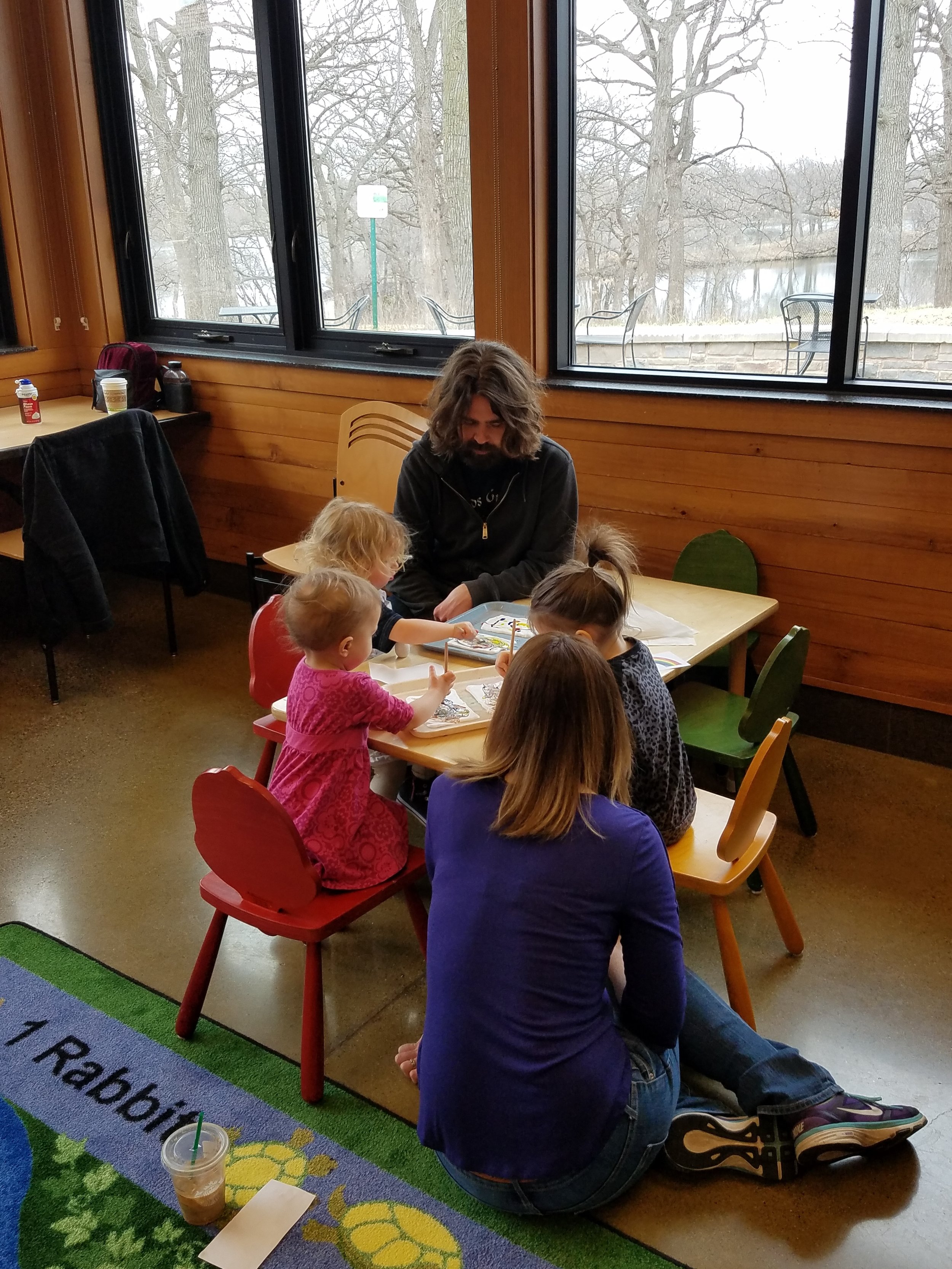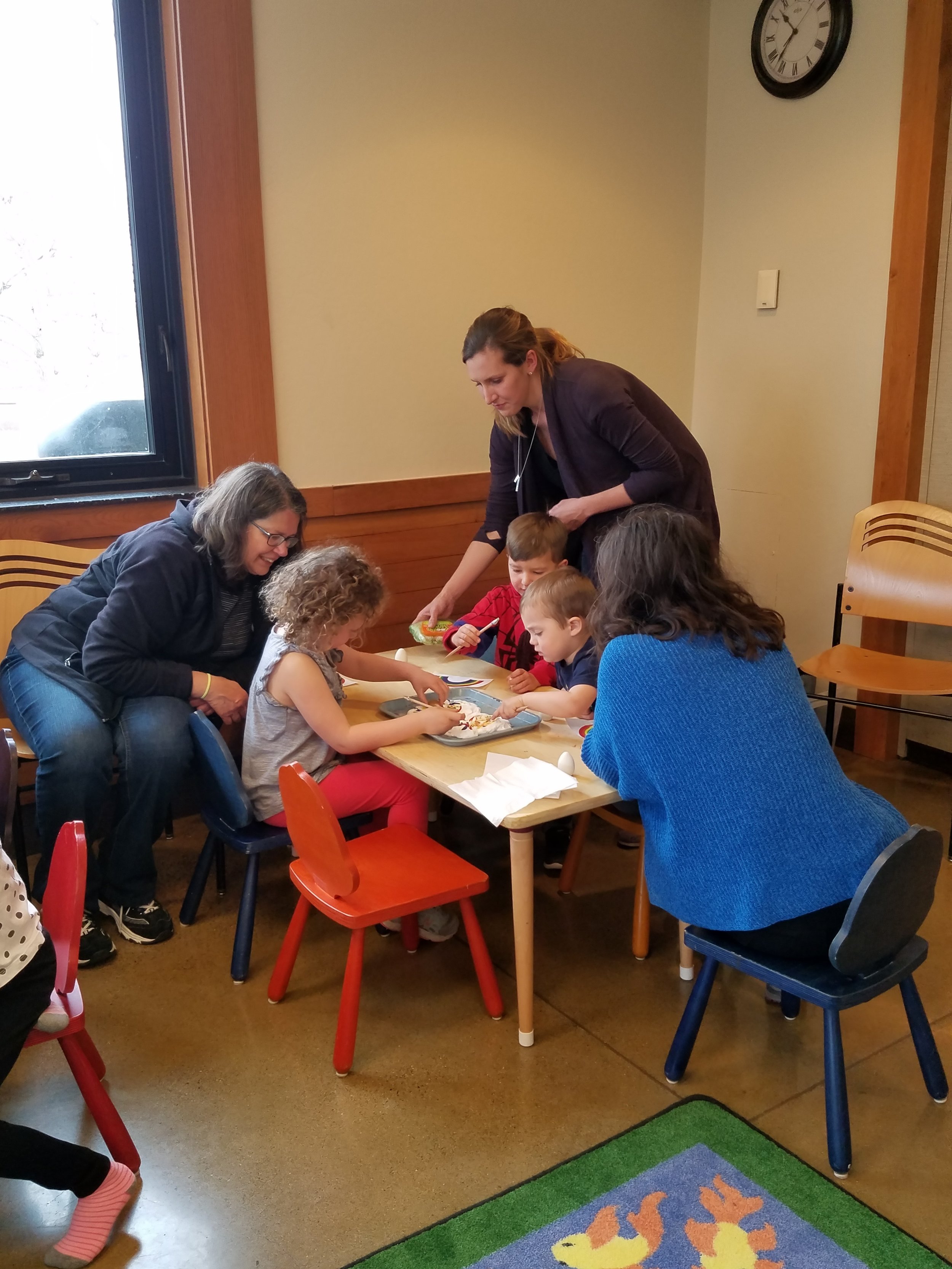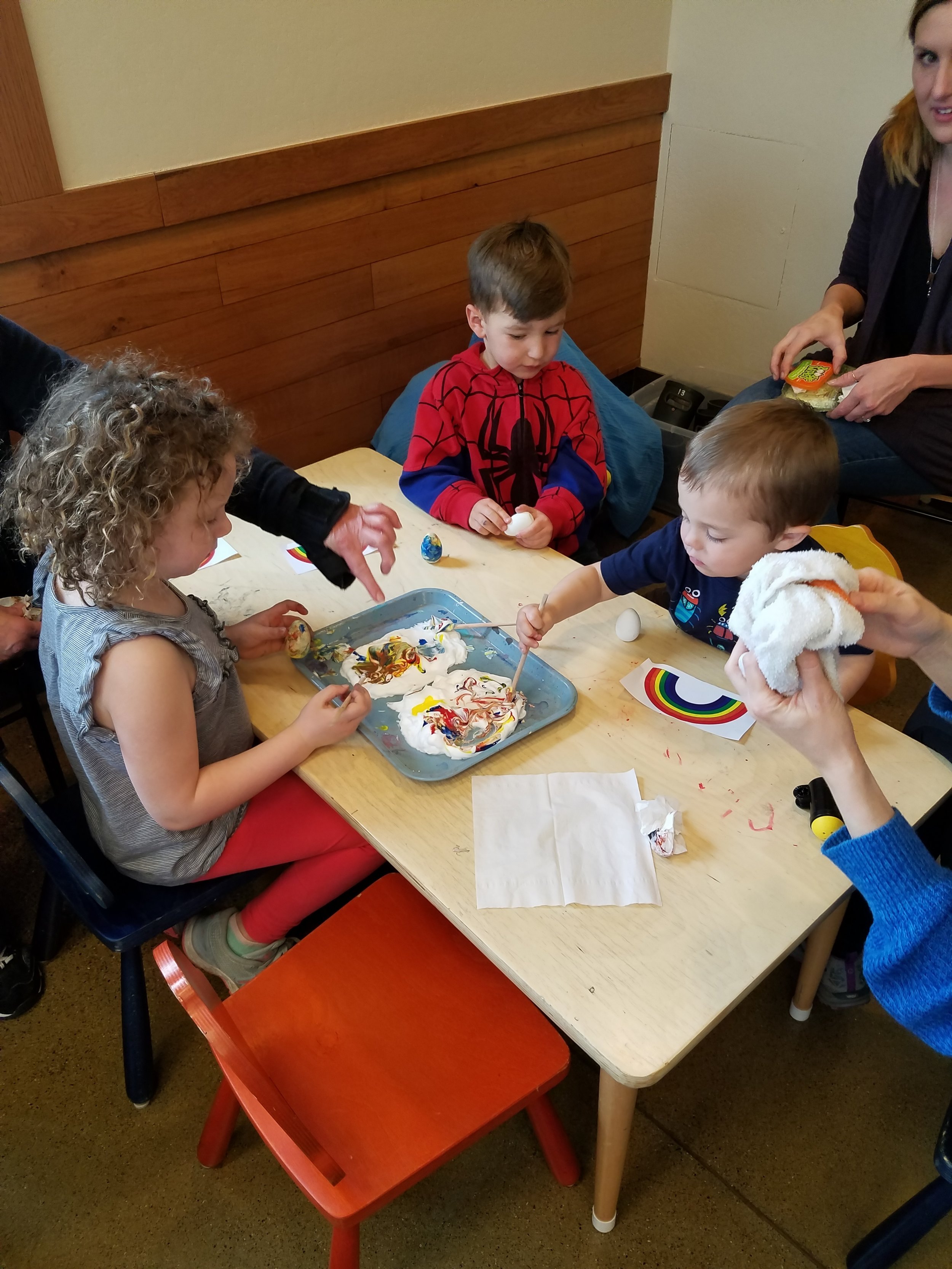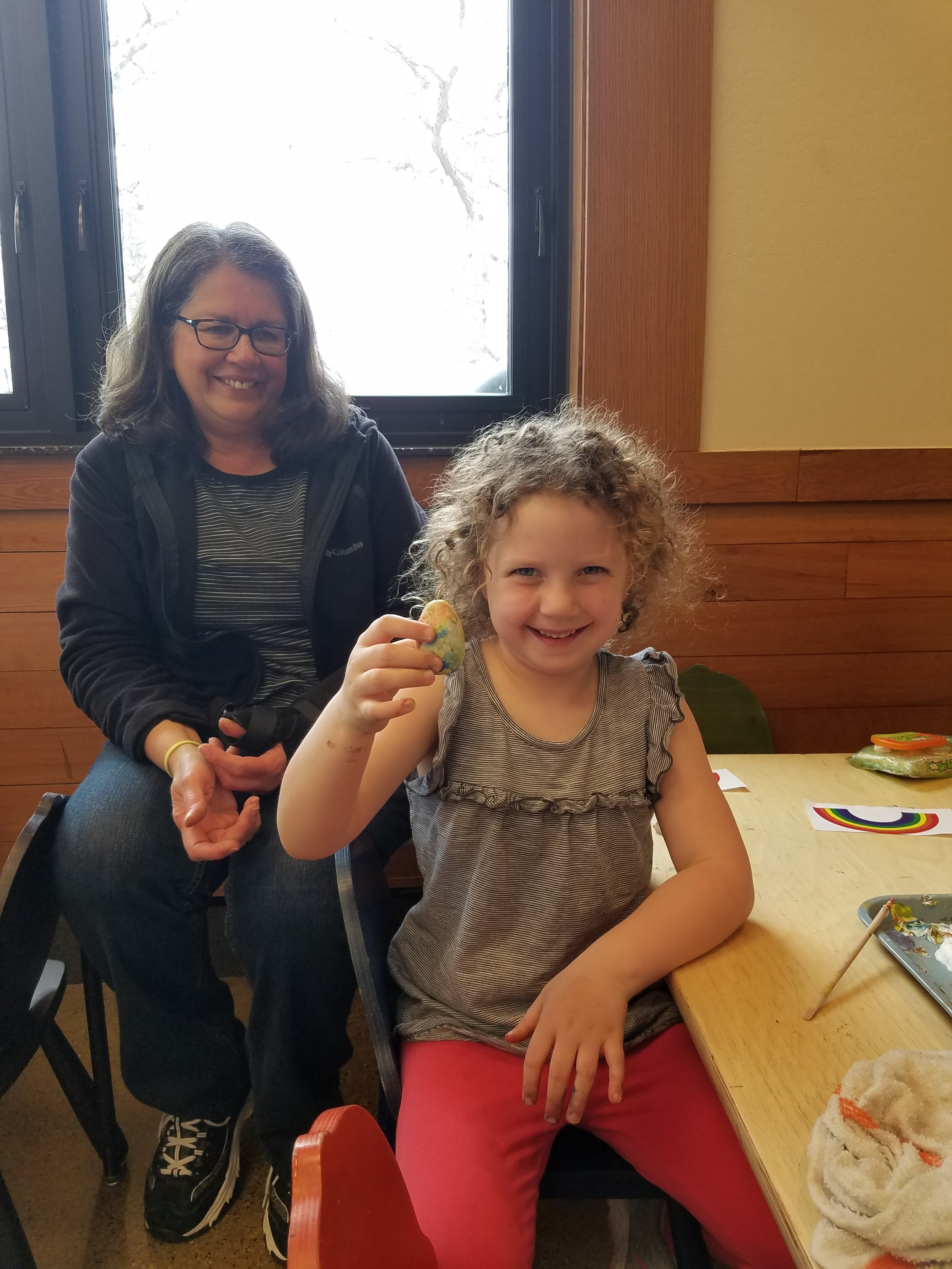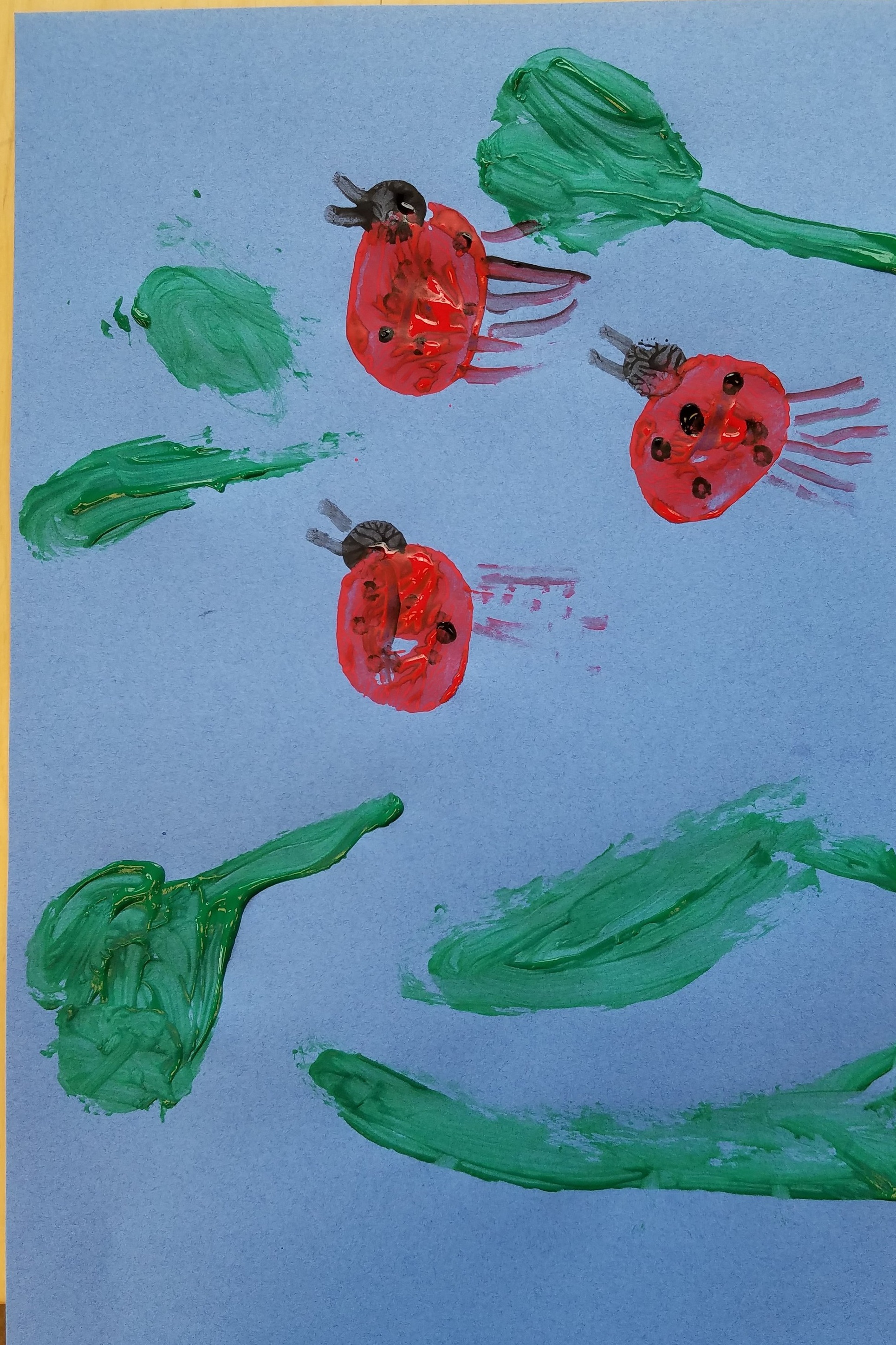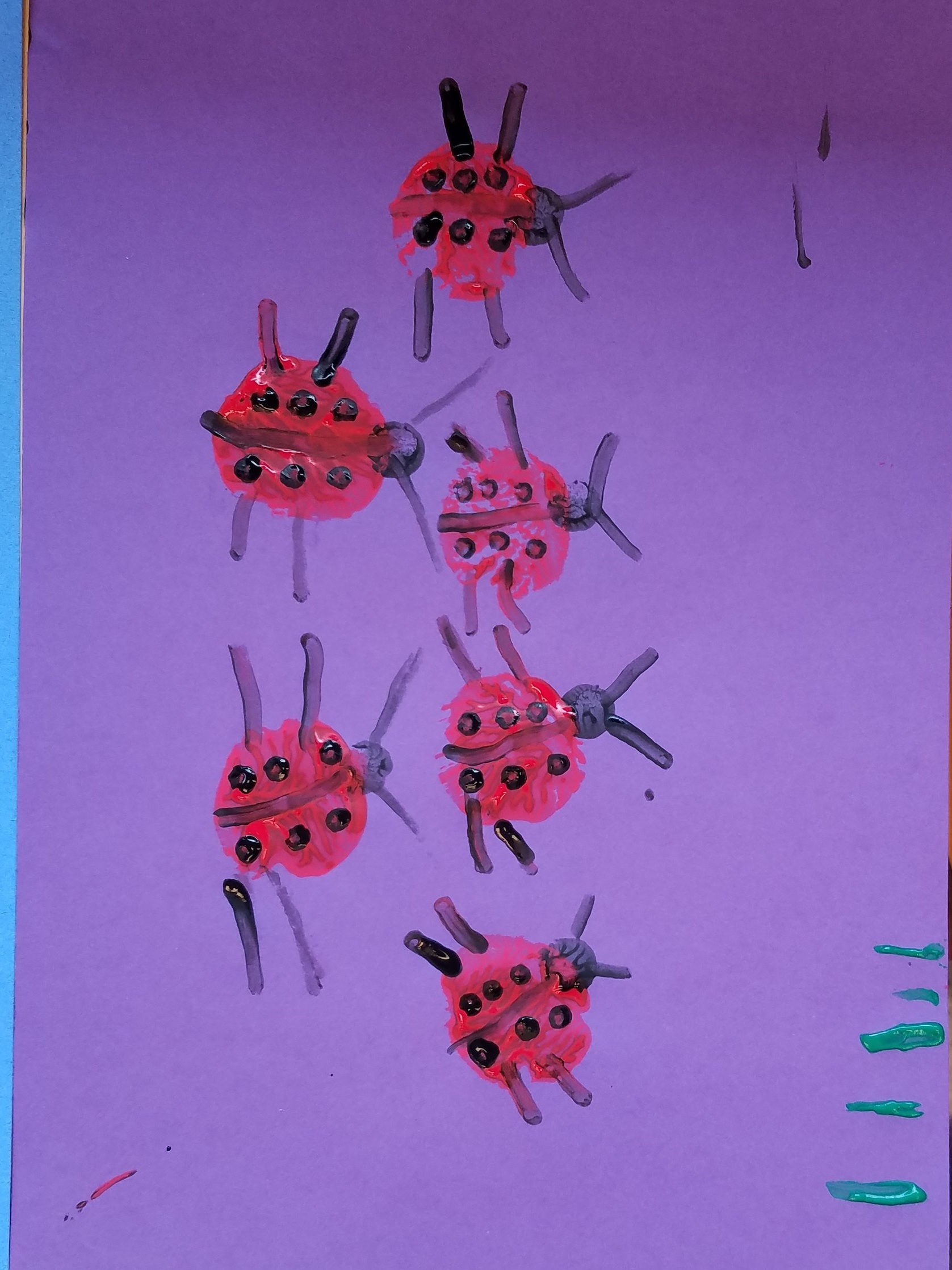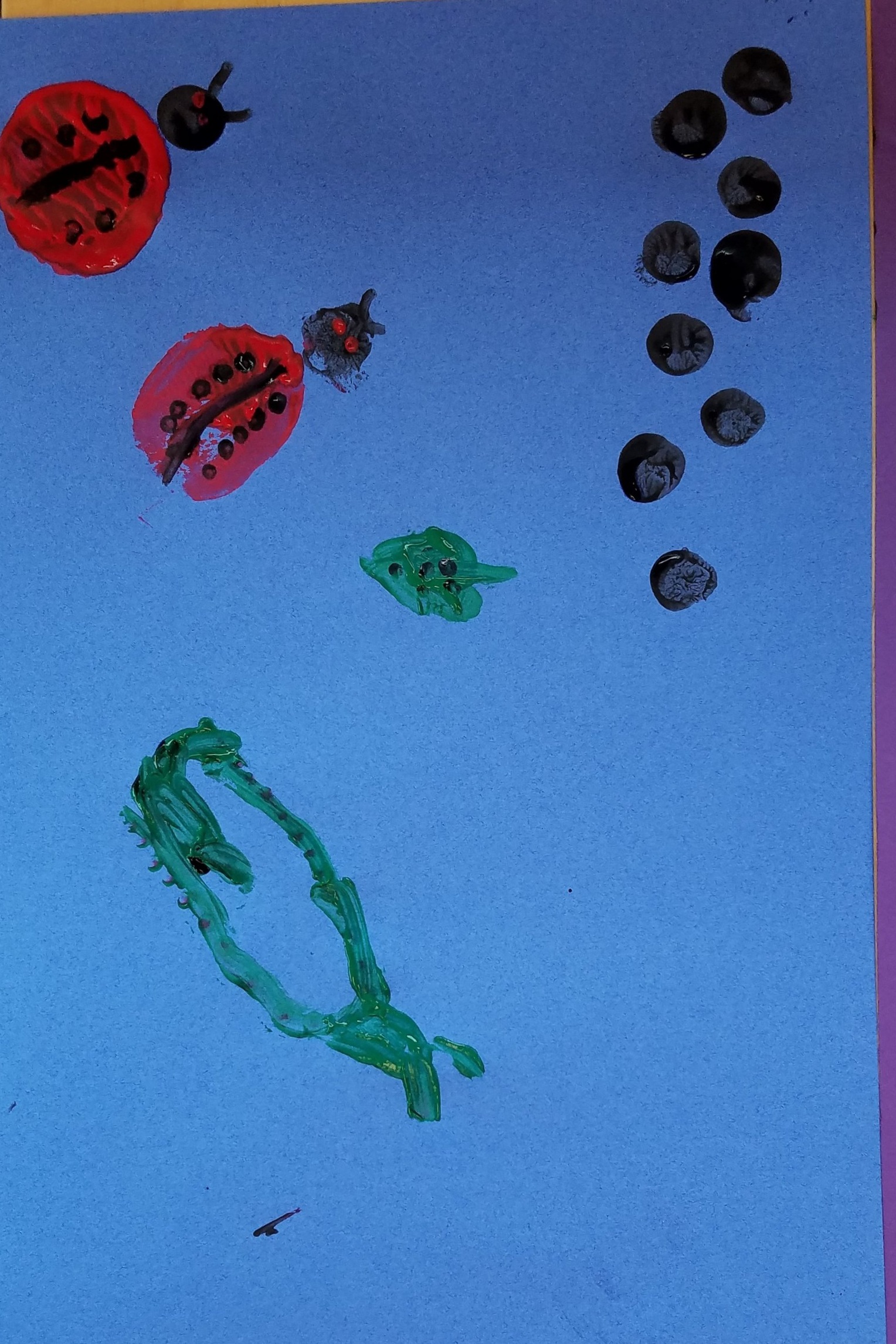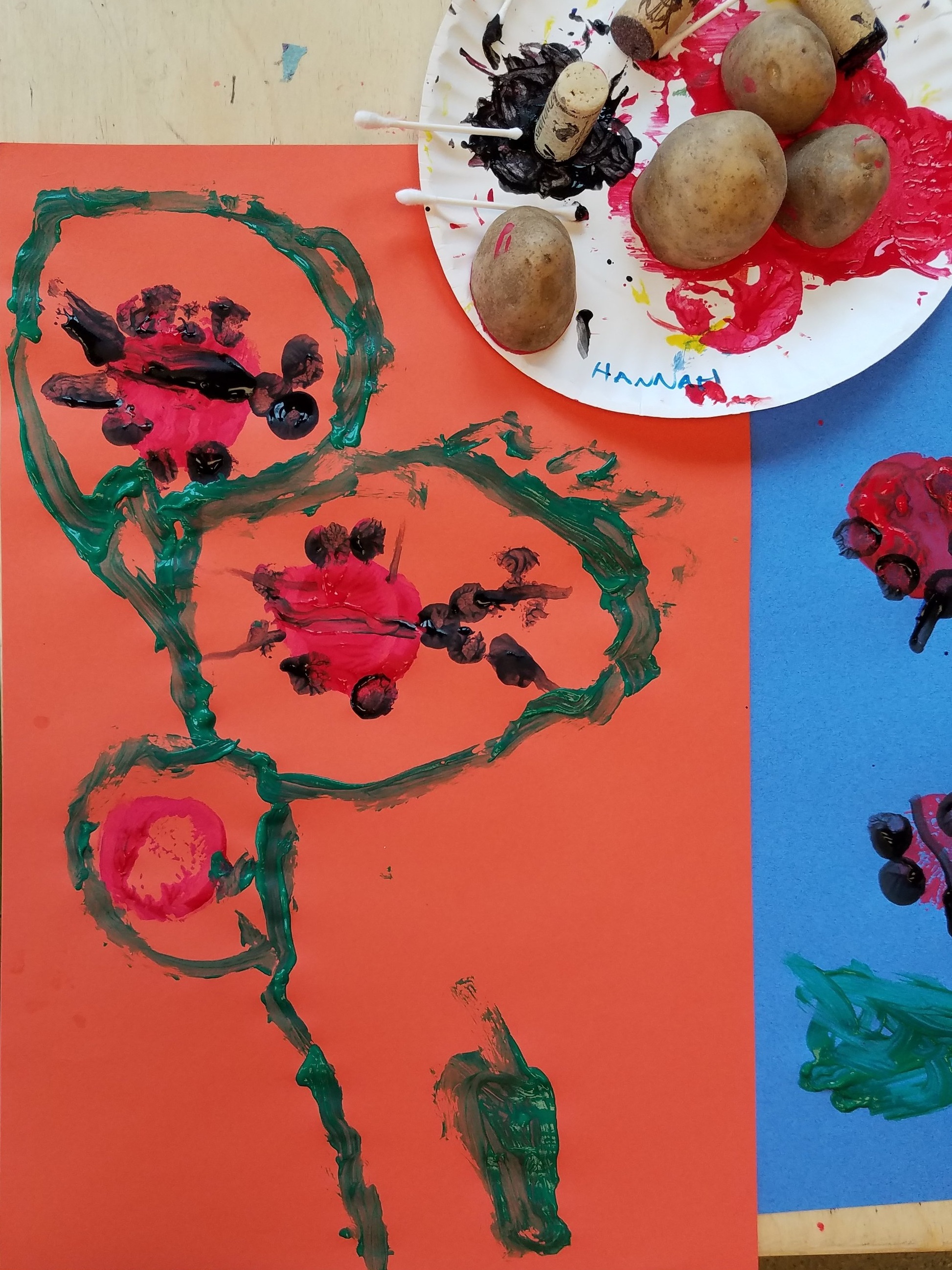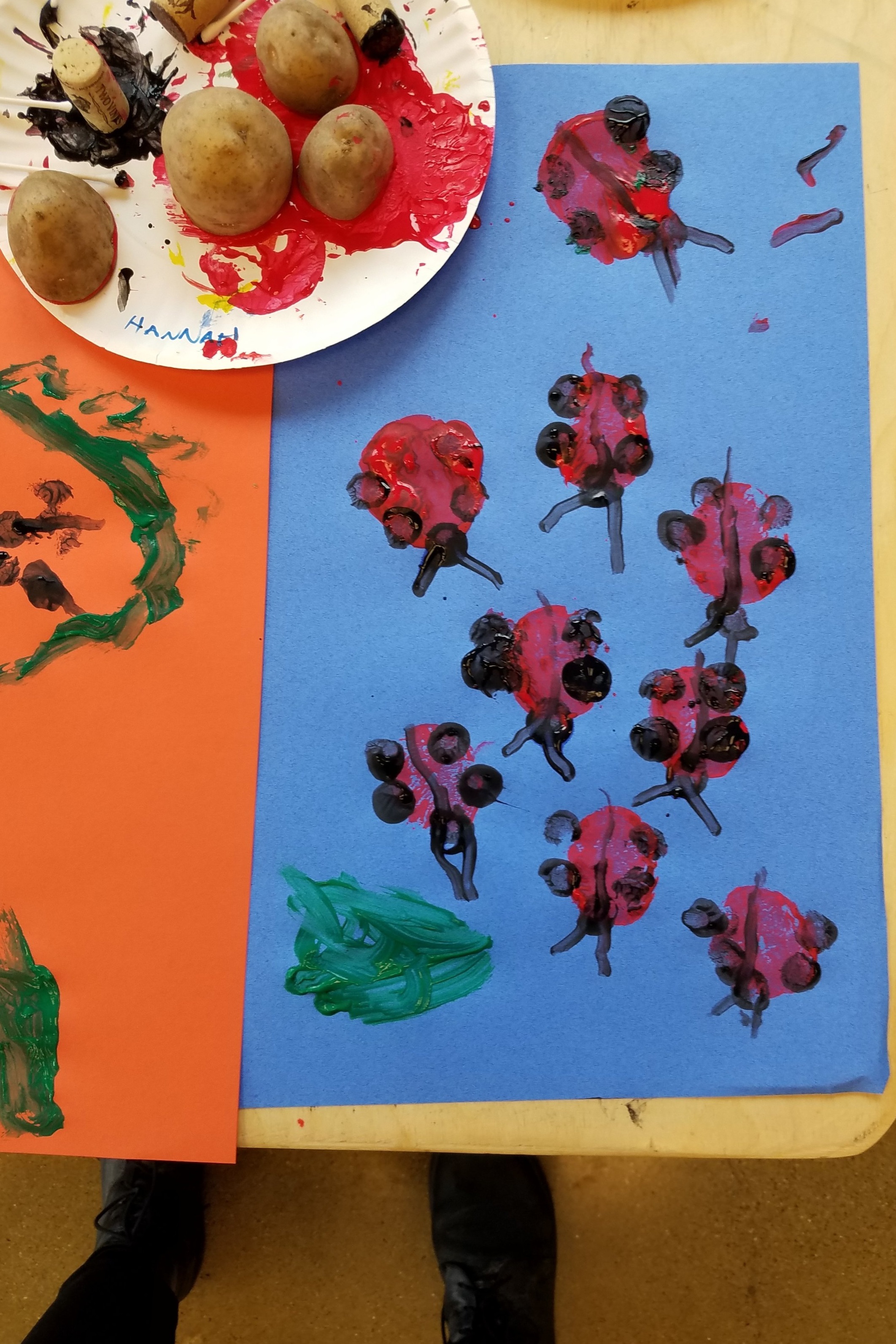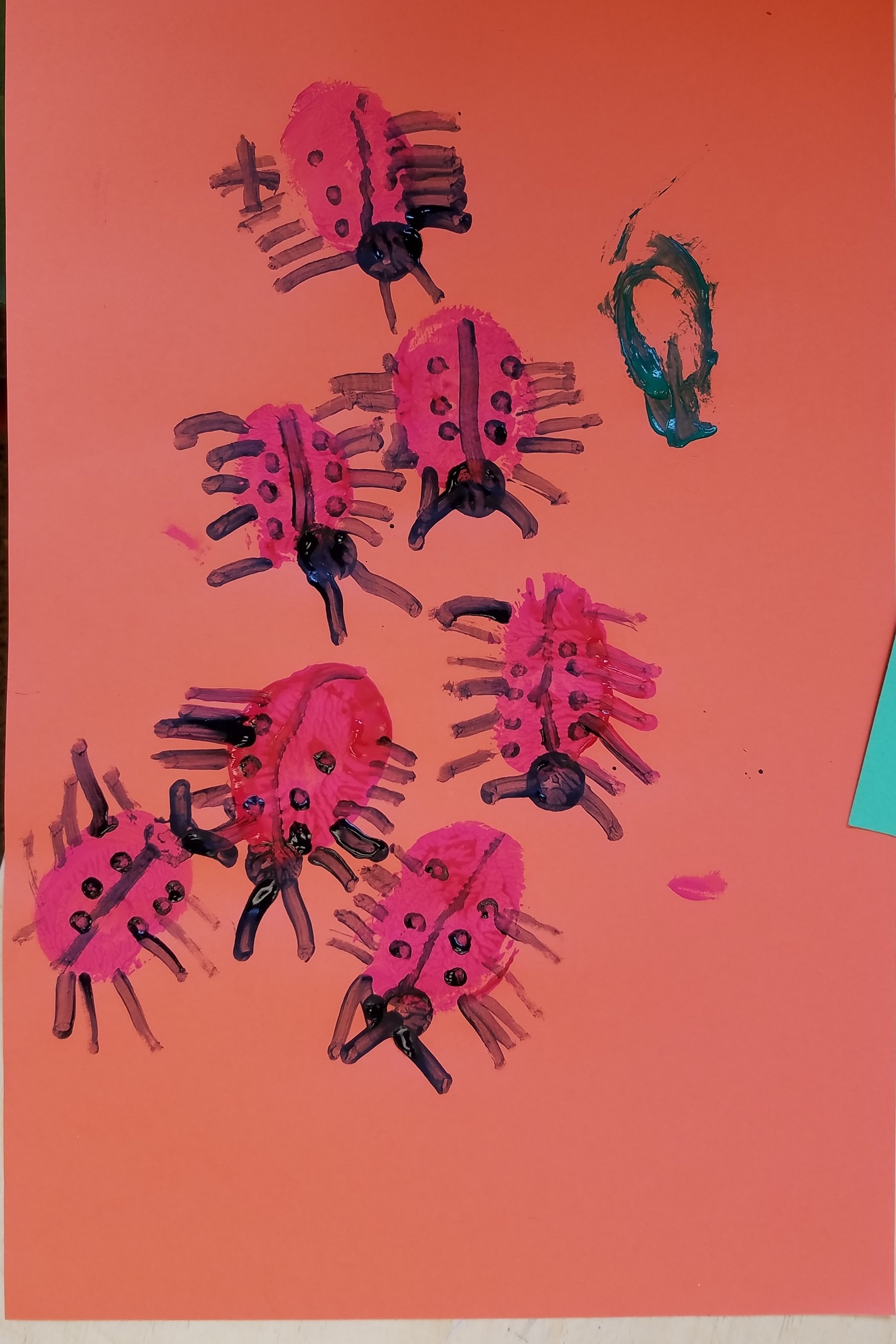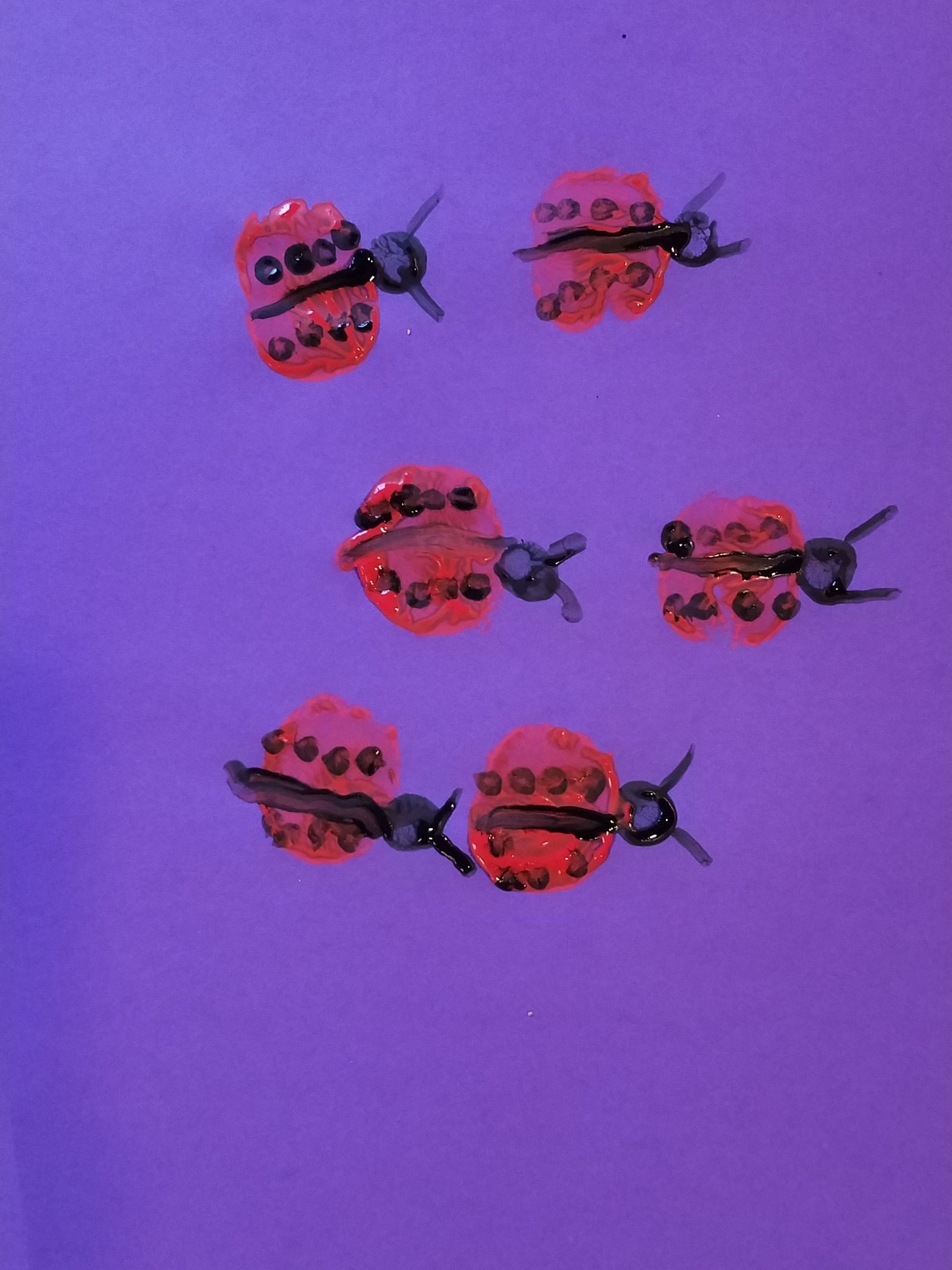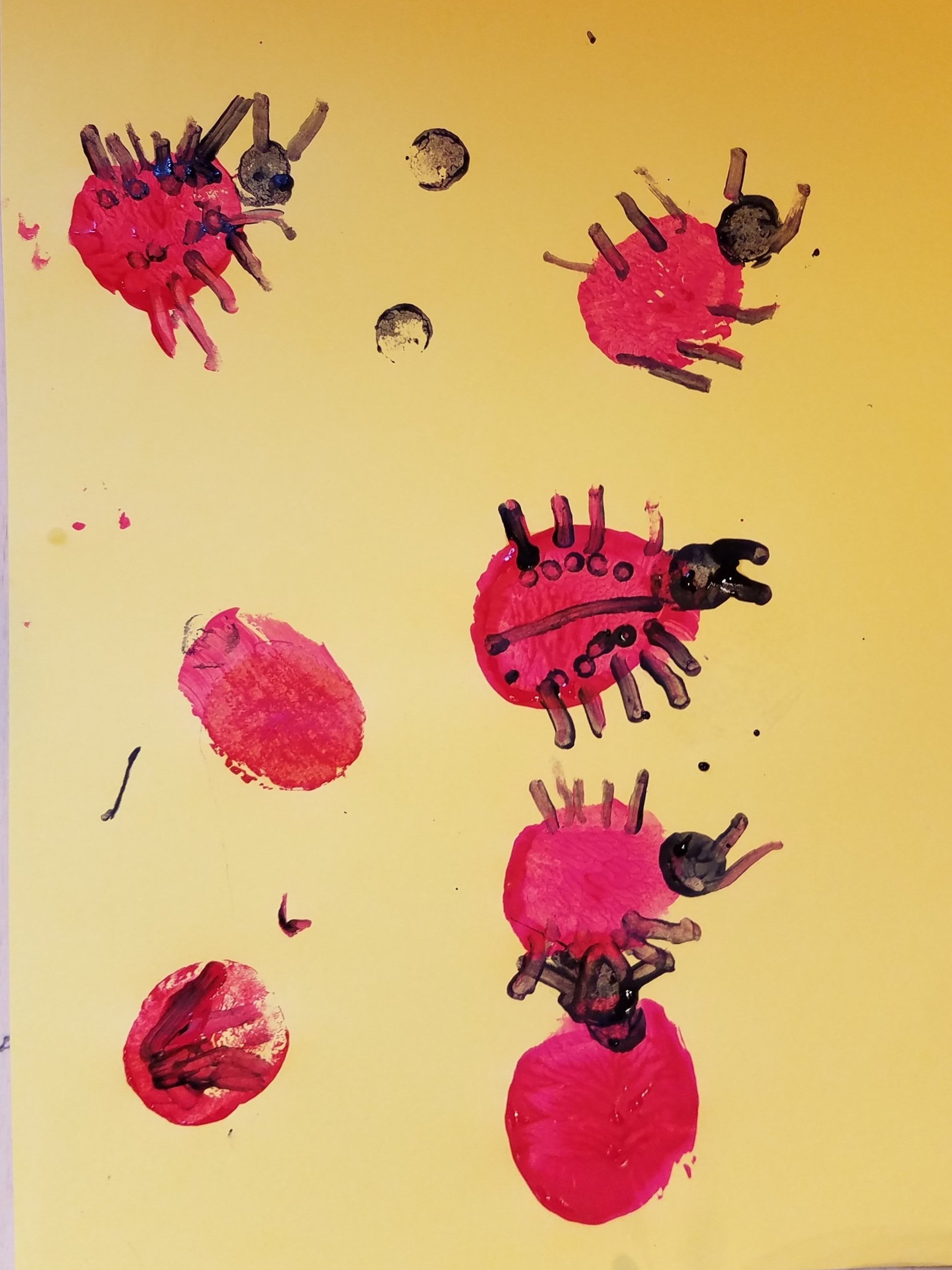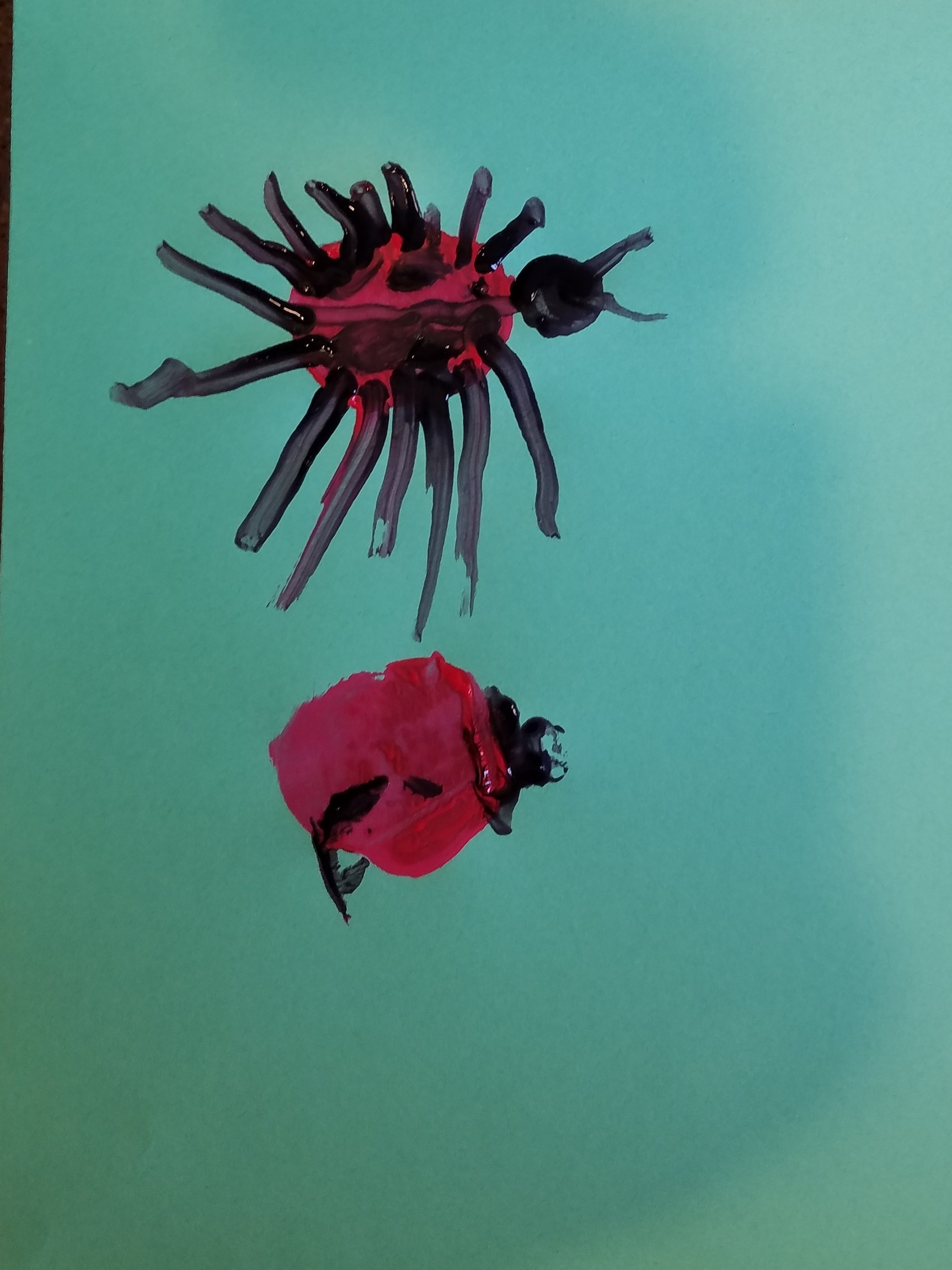Marbled Rainbows
School/Teacher/Classroom or Arts Organization/Mentor: Samantha Longley and Cora Williams
Grade Level or Age of Participants: 1-4 year olds
MCAD Teaching Artist: Eleni Leventopoulos
Number of Students: 12 children, accompanied by 1 adult per child
OVERVIEW OF PROJECT
Student will learn a basic marbling technique to make their own rainbow dyed eggs as they learn learn about colour and light.
“BIG IDEAS”/ ESSENTIAL QUESTION(S)
When and why do we see rainbows? What colours are rainbows?
STUDENT OUTCOME OBJECTIVES
Students will:
Learn about nature and the world around them through observation
Use color to create a rainbow marbled egg
Express creativity through art making
PRIOR KNOWLEDGE
Students will need no prior art making knowledge. Any prior rainbow information will be addressed in the nature lesson previous to the art making portion of the day.
LESSON PREPARATION TIMELINE
Before April 2019 - Silverwood instructors outline lesson topics for Green Beans
April 2019 - MCAD TA picks which lesson to shadow and which to teach
April 16 - choose art project
April 23 - outline structure, decide on associated book, choose colouring page, finalize material plan and prep
April 29 - Silverwood preps materials
April 30 - before class: prep shaving cream trays
April 30 - Teaching
EXAMPLES OF ARTWORK
Students are shown an example of a completed project. During the lesson they will watch a live demo of the project.
ADDITIONAL RESOURCES
Story Time book: chosen by Sam, borrowed from library: Peppa Pig and the Easter Rainbow by Candlewick Press
Naturalist lesson about rainbows led by Cora
ASSESSMENT
There is constant feedback of asking students question about what they were taught as well as invitation to share their own experiences. Teachers ask students if they enjoyed the art making that day, why if not, and ask about their favourite part. At the end of the day we ask students what they enjoyed most about the day. After all students have left, teachers meet briefly to discuss how the day went and note adjustments for next week.
MATERIALS
Wood eggs (painted white)
Markers
Shaving cream
Washable paint (red, yellow, blue)
towels (for wiping hands)
LEARNING ACTIVITIES AND TIMING
Explore time - participants will play with various puzzles, toys, games, and can do colouring sheets
Clean up - participants help put away explore time materials
Circle time - topic of the day is introduced
Circle time - question of the day: led natualist, question about colour or light, the ‘magic finger’ will point at a participant that then introduces themselves and then answers question
Nature lesson - participants will stay on the rug as Cora leads the nature talk about rainbows
Story time - Teaching Artist reads a story of a related topic
Movement - Classroom instructors lead a movement activity related to the topic
Art time - participants gather on the rug and be shown a finished example of the project. Teaching artist demonstrates step by step
tell students what the project is - paper marbled rainbows!
show finished example
show materials (paper, shaving cream, dye)
first, write name on paper
add some colour to the shaving cream and swirl gently
lay paper on top of shaving cream
peel up and wipe off excess foam
Children take their seats and materials will be passed out
Clean up - hands will be cleaned, papers left to dry
Prep to go outside - put on jackets and boots as needed
Outside time - walk, observe, play a game
Return - head back inside, gather all belongings
TEACHING ARTIST REFLECTION
It will be very helpful, mess wise, to have an accompanying adult ensure that no little one makes too big of a mess. I’ve been in the classroom enough and playing alongside participants and helping out as needed so I don’t think it will be disruptive or jarring to have me lead a lesson.



